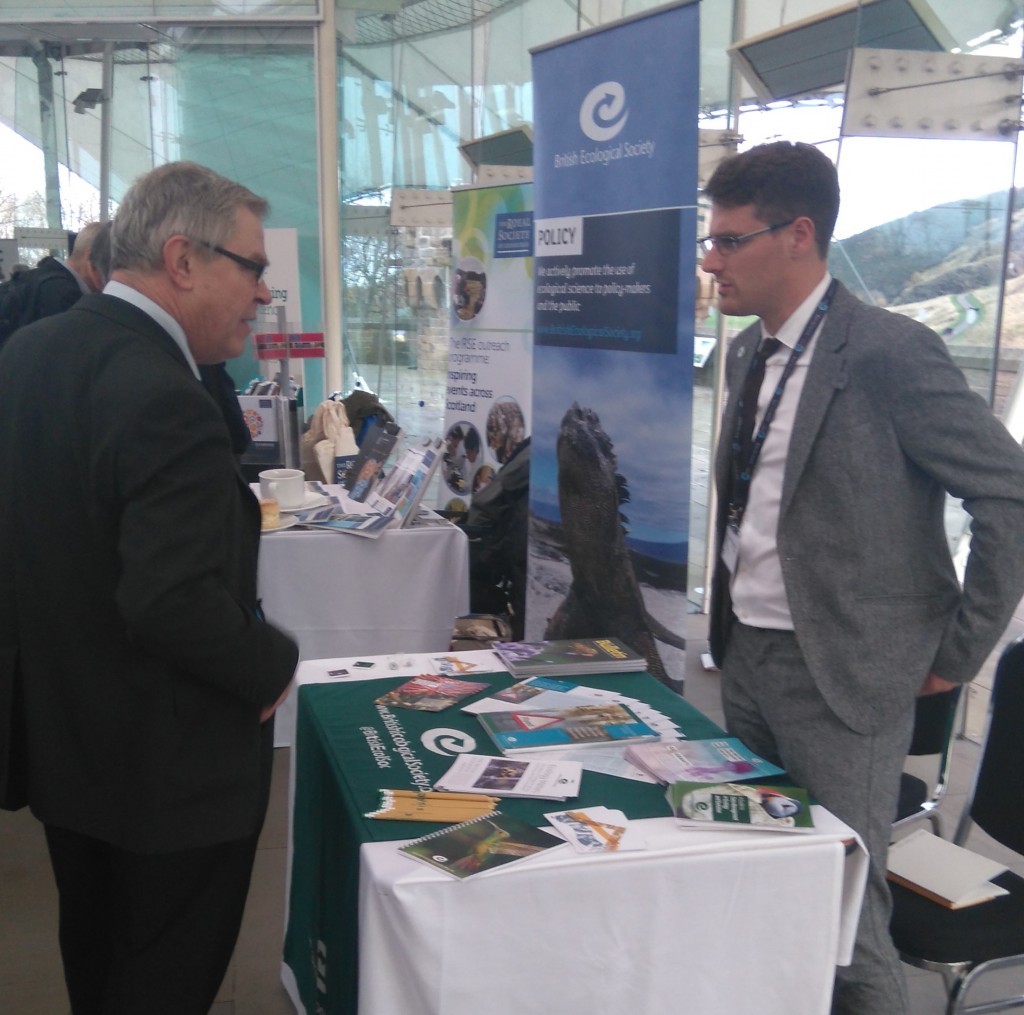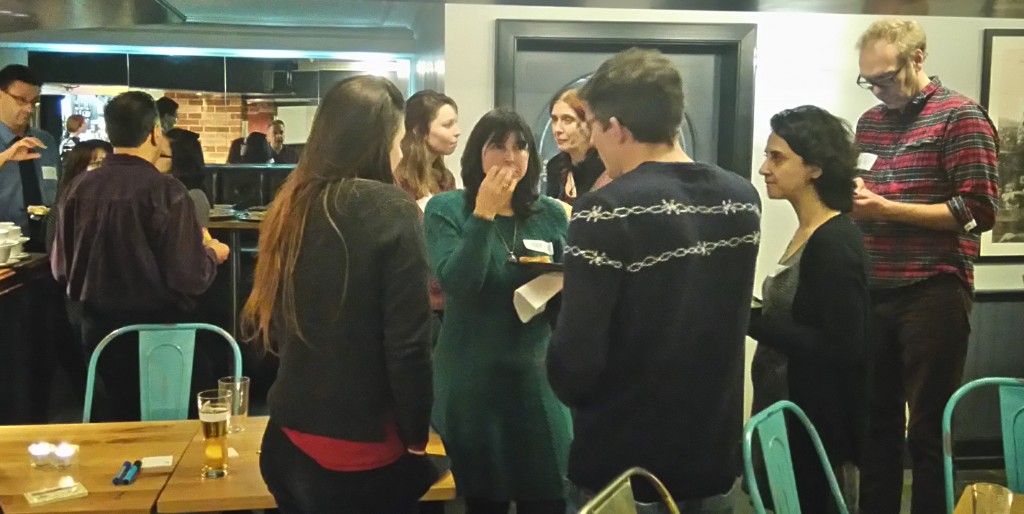People and policy: how best to communicate science
By Isabel Jones, Communications Representative, BES Scottish Policy Group
It’s been a busy couple of weeks for the BES Scottish Policy Group, attending the ‘Science and the Parliament 2015’ one-day meeting, the 2015 Scottish Environment LINK Congress, and of course hosting our ‘Pie and a Pint’ event on social media and science communication.

Communication can be a difficult thing, especially when it’s to a new audience who don’t always have a clue what you’re talking about. I get the feeling this is how ecologists feel a lot of the time as they try to convince people of the value of their research, and that really somebody should be listening and changing things accordingly. I’m reasonably new to science communication, and especially when trying to communicate science and research to policy makers and MSPs. It turns out there might be a few tricks to getting your point across [NB. This is a personal ‘list’ of things to bear in mind, is by no means exhaustive, or the key to success for changing the world]:
1) The research. This may seem like common sense, but make it relevant to your audience. If they’re focussed on something else – you’re talking about habitat loss when their main priority is improving teaching standards – then it’s going to be tricky to engage them in your research. What might be better is to target something they’re committed to already, for example improving health and living standards, and then link it to your research on habitat loss. That way, you might be able to create a partnership tackling both issues. A win-win situation.
2) The elevator pitch. Everyone is busy, so that opening line has to be spot on to hook their attention, otherwise your audience will get those glazed-over eyes and the chance to meaningfully engage them is gone. Hook them with an issue they’re already engaged with, and then develop your argument (same as point 1).
3) Once they’re hooked. You’ve hit the nail on the head with the elevator pitch. But what if your audience is just incredibly good at seeming attentive and interested? Now’s the time to ask a question, and if you want action from them, try to get an indication of when that will be. Follow up.
4) Get social. I heard it time and again over the past couple of weeks how valuable social media is in building a personal connection with people you’re trying to engage with. Everything is in the public eye on Twitter for example, and those 140 characters are perfect nuggets of information for busy people. Policy makers get a lot of their information from Twitter, so getting research on there (in an accessible format!) is key. Infographics and photos go down particularly well, and these can be a great hook to get your audience’s attention.
During our ‘Pie and a Pint’ event we heard about the personal experiences of Jonathan Silvertown (Uni. Edinburgh), Neil White (Scottish Government) Rea Cris (RSPB Scotland) and Nick Underdown (Scottish Environment LINK). It was great having their insight into how they use social media to communicate science policy, and they collectively highlighted the value of social media for connecting with new audiences, how timing social media outputs to coincide with local events helps gets more ‘hits’, and the importance of a good ‘hashtag’ e.g. the #DontTakeTheP Twitterstorm for Scottish Marine Protected Areas. It was also interesting to hear that following people with opposing views and/or research to get a balanced take on the issues in question, really helps to avoid ‘the bubble’ from only interacting with people who are doing similar things to you. Doing this can spark lively and productive debate!

Speaking of lively and productive debate, it would be remiss of me not to plug the GMO debate coming up at the BES Annual Meeting: the ban on GMOs and maintaining the ‘clean and green’ brand of Scotland is a huge policy issue right now, and we encourage BES members to get involved with the discussion on Wednesday 16th December.
You can find the BES Scottish Policy Group @BES_ScotPol, and more information about joining us here.
This blog was written by Isabel Jones who is on the BES-SPG Committee as the Communications Representative, and is a PhD student at the University of Stirling @_Isabel_Jones
Like what we stand for?
Support our mission and help develop the next generation of ecologists by donating to the British Ecological Society.